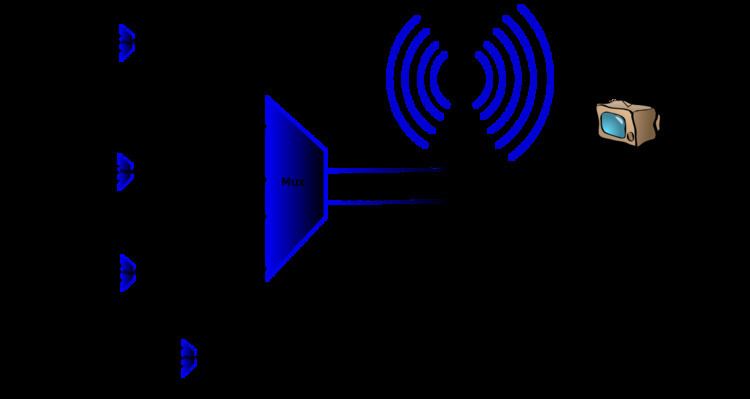 | ||
The Program and System Information Protocol (PSIP) is the MPEG (a video and audio industry group) and privately defined program-specific information originally defined by General Instrument for the DigiCipher 2 system and later extended for the ATSC digital television system for carrying metadata about each channel in the broadcast MPEG transport stream of a television station and for publishing information about television programs so that viewers can select what to watch by title and description.
Contents
What PSIP does
PSIP defines virtual channels and content ratings, as well as electronic program guides with titles and (optionally) descriptions to be decoded and displayed by the ATSC tuner.
PSIP can also send:
PSIP is defined in ATSC standard A/65, the most recent revision of which is A/65:2013, published in 2013. A/69 is a recommended practice for implementing PSIP in a television station.
PSIP also supersedes the A/55 and A/56 protocol methods of delivering program guide information (which the ATSC has deleted). TV Guide On Screen is a different, proprietary system provided by datacasting on a single station, while PSIP is required, at least in the United States, to be sent by every digital television station.
PSIP information may be passed through the airchain using proprietary protocols or through use of the XML-based Programming Metadata Communication Protocol (PMCP, or ATSC A/76) facility metadata scheme.
Included tables
¹ indicates a Federal Communications Commission requirement
Directed channel change
The DCC function lets broadcasters tell a digital television receiver where to change, based upon the viewer's settings. This is most likely to be a ZIP or other postal code, which can select demographically-based programming to show, such as television commercials or weather bulletins, possibly taken from an accompanying datacasting channel.
Implementation of the DCC feature is entirely optional, and depends on development of receiver and decoder technology. For example, a digital video recorder could record commercial broadcast at other times for later replay, so that many more different commercials could be shown in different parts of a large metro area than can actually be transmitted at once.
